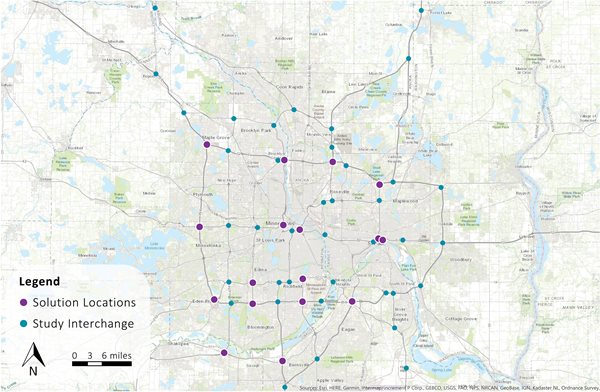Freeway System Interchange Study
The Metropolitan Council partnered with the Minnesota Department of Transportation (MnDOT) to conduct a study of 56 Twin Cities locations where at least two freeways meet. Examples of these locations:
- I-35W at I-694 in Arden Hills and New Brighton
- I-94 at I-494 / I-694 in in Oakdale and Woodbury
People want interchanges that allow various forms of transportation to move freely and safely whether driving, using public transit or carrying freight. As crashes happen and traffic volumes grow, we need to plan for safer, more efficient designs that keep people moving.
Results
Of the 56 system interchanges in the Twin Cities, 17 were prioritized for solution development. For each of these locations, the study team developed at least one, and in many cases more than one, cost-effective improvements.
-
The study team developed 66 possible improvements, ranging in estimated cost from under $10 million to over $100 million, where estimated benefits are greater than estimated costs.
-
Local, regional and state planners and engineers will consider these results as funding opportunities present themselves and as agencies develop preservation projects.
-
To advance any of these solutions, planners and engineers will need to reconsider and refine the improvements as part of project development and the formal environmental process, which will examine the details of the local transportation context and impacts.

Study participation
The Technical Advisory Committee provides a forum to shape this study with participation from staff who represent:
- The seven counties in the metro area
- Wright and Sherburne counties
- Municipal governments
- Federal Highway Administration (FHWA)
- MnDOT
- The Metropolitan Council
Agency staff and the consultant, SRF Consulting Group, Inc. shared key milestones with several of the region's transportation-related standing committees including the Transportation Advisory Board, its subcommittees, the Congestion Management Process Advisory Committee, and the Minnesota Freight Advisory Committee.